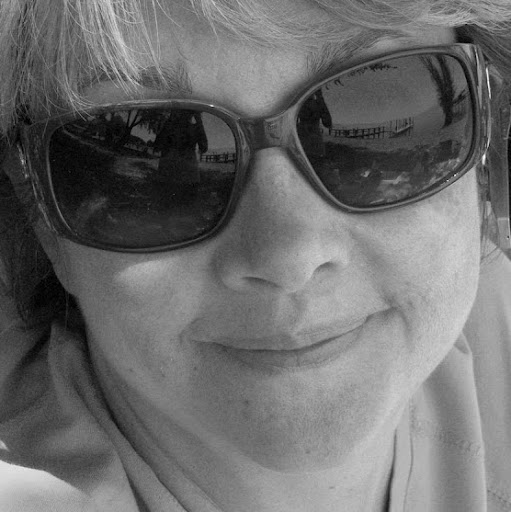Mary J Hewitt
age ~70
from Santa Barbara, CA
Mary Hewitt Phones & Addresses
- 411 Camino De La Aldea, Santa Barbara, CA 93111
- Hot Springs Village, AR
- Park City, UT
Medicine Doctors

Mary F. Hewitt
view sourceSpecialties:
Family Medicine
Work:
Mary F Hewitt MD
620 Massey Tompkins Rd, Baytown, TX 77521
(281)4276363 (phone), (281)8388393 (fax)
620 Massey Tompkins Rd, Baytown, TX 77521
(281)4276363 (phone), (281)8388393 (fax)
Education:
Medical School
Texas A & M University Health Science Center Colle of Medicine
Graduated: 1997
Texas A & M University Health Science Center Colle of Medicine
Graduated: 1997
Procedures:
Wound Care
Pulmonary Function Tests
Vaccine Administration
Pulmonary Function Tests
Vaccine Administration
Conditions:
Abdominal Hernia
Abnormal Vaginal Bleeding
Acne
Acute Bronchitis
Acute Conjunctivitis
Abnormal Vaginal Bleeding
Acne
Acute Bronchitis
Acute Conjunctivitis
Languages:
English
Spanish
Spanish
Description:
Dr. Hewitt graduated from the Texas A & M University Health Science Center Colle of Medicine in 1997. She works in Baytown, TX and specializes in Family Medicine. Dr. Hewitt is affiliated with Houston Methodist San Jacinto Hospital.

Mary Hewitt
view sourceSpecialties:
Pediatrics
Work:
Atlantic Medical GroupPulmonary & Allergy Associates
1 Springfield Ave STE 3A, Summit, NJ 07901
(908)9340555 (phone), (908)9340556 (fax)
1 Springfield Ave STE 3A, Summit, NJ 07901
(908)9340555 (phone), (908)9340556 (fax)
Languages:
English
Spanish
Spanish
Description:
Ms. Hewitt works in Summit, NJ and specializes in Pediatrics. Ms. Hewitt is affiliated with Morristown Medical Center and Overlook Medical Center.

Mary Faye Hewitt
view sourceSpecialties:
Family Medicine
General Practice
General Practice
Education:
Texas A&M University(1997)
Lawyers & Attorneys

Mary Hewitt - Lawyer
view sourceOffice:
Mary J. Hewitt
Specialties:
Employment Discrimination
Banking
Estate Planning
Probate
Litigation
Juvenile Law
Family Law
Social Security
Banking
Estate Planning
Probate
Litigation
Juvenile Law
Family Law
Social Security
ISLN:
906506316
Admitted:
1990
University:
University of Nebraska, B.A., 1978
Law School:
University of Nebraska, J.D., 1990
Us Patents
-
Bi-Directional Capable Bucket Brigade Circuit
view source -
US Patent:6762795, Jul 13, 2004
-
Filed:Jan 7, 2000
-
Appl. No.:09/479703
-
Inventors:Leonard P. Chen - Santa Barbara CA
Howard T. Chang - Santa Barbara CA
Eileen M. Herrin - Goleta CA
Mary J. Hewitt - Santa Barbara CA
John L. Vampola - Santa Barbara CA -
Assignee:Raytheon Company - Waltham MA
-
International Classification:H04N 314
-
US Classification:348295, 348308
-
Abstract:A time delay integration circuit in which a number of unit cell inputs ( ) along with their respective switches ( ) are input to a bi-directional BBD circuit ( ). The BBD circuit performs an SCA TDI with reduced ROIC circuitry and compatibility with standard LSI processing. The bi-directional BBD circuit has numerous pairs of MOSFETs ( ) connected in series and numerous storage capacitors ( ) having one of their terminals respectively connected between each of the MOSFET pairs and the other of their terminals alternately connected to clock phases à and Ã. The gates of the MOSFETs in each pair are separated from the clock phases à and à and function respectively as screen gate and transfer clock for one direction of charge flow, and as transfer clock and screen gate for the other direction of charge flow. Transfer direction is changed by switching which MOSFET in a pair becomes clocked as a transfer gate and which becomes a screen gate.
-
Multiplex Bucket Brigade Circuit
view source -
US Patent:6825877, Nov 30, 2004
-
Filed:Jan 7, 2000
-
Appl. No.:09/479699
-
Inventors:Mary J. Hewitt - Santa Barbara CA
John L. Vampola - Santa Barbara CA
Leonard P. Chen - Santa Barbara CA -
Assignee:Raytheon Company - Waltham MA
-
International Classification:H04N 314
-
US Classification:348295, 377 57, 257251
-
Abstract:A sensor chip assembly time delay integration circuit useful with image sensing arrays uses a duplex bucket brigade circuit ( ) with two or more charge transfer paths, a number of capacitors ( ) common to the charge transfer paths, and a number of capacitors ( ) specific to each of the charge transfer paths. Each of the charge transfer paths has a number of MOSFET transfer gates ( ) connected in series, and the common capacitors and the path-specific capacitors are alternately connected to the paths. Each of the common capacitors is controllably connected ( ) either to a unit cell input circuit ( ). a reset node ( ), or an open circuit. The circuit operates by storing accumulated image sensor charges from alternate sensor lines on the path-specific capacitors. The common capacitors are reset and then connected to the unit cell input circuits to acquire a first set of image sensor charges. Charges stored on, for example, the capacitors of a particular path are then transferred to the common capacitors through transfer gates, in effect accumulating charge on the common capacitors.
-
Systems And Methods For Detecting And Geo-Locating Hazardous Refuse
view source -
US Patent:8384540, Feb 26, 2013
-
Filed:Jun 28, 2010
-
Appl. No.:12/824641
-
Inventors:Hector M. Reyes - Richardson TX, US
Donald P. Graham - Allen TX, US
Mary J. Hewitt - Santa Barbara CA, US
Michael Crist - Anna TX, US -
Assignee:Raytheon Company - Waltham MA
-
International Classification:G08B 1/00
-
US Classification:340532, 3405721, 34053913, 209 32
-
Abstract:The present disclosure relates to systems and methods for scanning refuse (garbage, trash) from a large geographic area to detect the presence of hazardous materials in the refuse. Hazardous material may comprise CBRNE agents, components of terrorist devices, environmental pollutants and toxins and illegal drugs and may include trace particulates of such agents as well as by-products thereof. Systems and methods, according to some embodiments, may further comprise geo-locating to a small geographic area the origin of hazardous material. Accordingly, in some embodiments the disclosure provides systems and methods to geo-locate facilities or addresses where hazardous materials are generated, thereby geo-locating facilities that make terrorist devices, sources of environmental pollutants and/or sources of illegal drugs. According to some embodiments, systems and methods of the disclosure enable focusing efforts of law enforcement authorities to identify terrorists, drug activities and/or environmental offenders to small geographic areas (e. g. a street address).
-
Charge Mode Capacitor Transimpedance Amplifier
view source -
US Patent:6121843, Sep 19, 2000
-
Filed:Jun 4, 1999
-
Appl. No.:9/326080
-
Inventors:John L. Vampola - Santa Barbara CA
Mary J. Hewitt - Santa Barbara CA -
Assignee:Raytheon Company - Lexington MA
-
International Classification:H03F 308
-
US Classification:330308
-
Abstract:An amplifier circuit, referred to as a charge mode capacitor transimpedance amplifier (or CM-CTIA) an input node (IN) and an output node (OUT), and includes a transistor (M. sub. IN) having a gate terminal (G) coupled to the input node, a source terminal (S), and a drain terminal (D) coupled to the output node, a first capacitance (C. sub. FB) coupled between the gate terminal and the drain terminal, a second capacitance (C. sub. S) coupled between the source terminal and a first potential (GND), a third capacitance (C. sub. D) coupled between the drain terminal and the first potential or another fixed potential, a first switch (SW1) coupled between a second potential and the drain terminal, and a second switch (SW2) coupled between a third potential (V. sub. RESET) and the gate terminal. During use, the input node is coupled to an output of a radiation detector, such as a photovoltaic IR detector (12) that forms one element or pixel of an array of IR detectors.
-
Noise Immune Infrared Readout Circuitry And Technique
view source -
US Patent:47437626, May 10, 1988
-
Filed:Aug 12, 1986
-
Appl. No.:6/895649
-
Inventors:Steve D. Gaalema - Encinitas CA
Mary J. Hewitt - Santa Barbara CA
Arthur L. Morse - Hawthorne CA -
Assignee:Hughes Aircraft Company - Los Angeles CA
-
International Classification:G01T 122
-
US Classification:2503361
-
Abstract:A new technique, and output encoding circuits using that technique, are disclosed for interfacing between a semiconductor IR detector 23 and associated output electronics 24, 25, 26, which technique and circuits transfer a charge packet onto a sense capacitor 22 that previously stored a reset level signal. The resulting stepped signal change, or delta, in the voltage present on that capacitor 22 is employed as the output signal.
-
Backside Contact Blocked Impurity Band Detector
view source -
US Patent:49566873, Sep 11, 1990
-
Filed:Oct 9, 1987
-
Appl. No.:7/107874
-
Inventors:Johannes B. de Bruin - Santa Barbara CA
Mary J. Hewitt - Santa Barbara CA
James D. Phillips - Goleta CA -
Assignee:Santa Barbara Research Center - Goleta CA
-
International Classification:H01L 31101
-
US Classification:357 30
-
Abstract:A blocked impurity band detector having a high fill factor is comprised of a radiation detecting layer and an overlying blocking layer which are interposed between a plurality of rear contact regions and a frontside common electrical contact layer. Disposed over the surface of the frontside contact layer is a layer of metalization formed as a substantially transparent grid. Radiation enters the detecting layer through the grid, contact layer, and blocking layer. Each of the rear contact regions is conductively coupled to an end of a metallic conductor, or via, which is disposed through an insulating substrate. The opposite end of each of the metallic conductors exits the back surface of the substrate and is adapted for connection to an integrated circuit readout device.
-
Ultra Low Power Gain Circuit (Ugc)
view source -
US Patent:54771730, Dec 19, 1995
-
Filed:Jul 30, 1993
-
Appl. No.:8/100648
-
Inventors:John D. Schlesselmann - Santa Barbara CA
Kevin L. Pettijohn - Goleta CA
William H. Frye - Goleta CA
Mary J. Hewitt - Santa Barbara CA -
Assignee:Santa Barbara Research Center - Goleta CA
-
International Classification:H03K 17687
H03K 3353 -
US Classification:327111
-
Abstract:An ultra low power gain circuit (UGC) implements a unique operational mode of a source follower circuit, and enables programmable gains greater than unity. A MOSFET has a gate terminal coupled to an input capacitance (Cin). A potential at a drain of the MOSFET is clocked to enable charge to flow through the channel. This charge charges a capacitor (Cout) that is connected to a source of the MOSFET. After charging Cout, the drain potential is restored to an initial value, and the charge on Cout discharges back through the MOSFET until the source voltage is one threshold drop from the gate potential, at which time the MOSFET turns off. Cout then stops discharging, and the final voltage appearing on Cout is a function of the magnitude of the gate voltage appearing on Cin. As the voltage at the source of the MOSFET changes, capacitive coupling, via (Cgs) to the gate, causes the gate voltage to also change. The value of the gate voltage determines a magnitude of a final voltage to which the source settles.
-
Imaging System Employing Charge Amplifier
view source -
US Patent:49567160, Sep 11, 1990
-
Filed:Feb 21, 1989
-
Appl. No.:7/312262
-
Inventors:Mary J. Hewitt - Santa Barbara CA
Johannes B. de Bruin - Santa Barbara CA -
Assignee:Santa Barbara Research Center - Goleta CA
-
International Classification:H04N 314
-
US Classification:35821327
-
Abstract:A system 10 for imaging radiation received from a scene provides for the focusing of the radiation upon a set of detectors 12. A set of amplifiers 14 couple the detectors to an image processor 24 for forming an image of the scene. The amplifiers are pulsed with a repeating sequence of pulses providing sequential operation of the amplifiers. The amplifiers and the detectors are constructed on a single substrate which is cyrogenically cooled for improved signal-to-noise ratio. Amplifying elements in each of the amplifiers are powered by energy stored as electric charges in capacitors. The capacitors are recharged with pulses from a pulsing unit repetitively in a repeating sequence of amplifier operation. The capacitors provide for integration of detector signals, there being additional integration performed at the front end of each of the amplifiers utilizing stray capacitance and detector capacitance. Adjustment of front end voltage of each of the amplifiers permits compensation for nonuniformities among the detectors.
Name / Title
Company / Classification
Phones & Addresses
T MET K, INC
EMERALD ADVISORS, LLC
G&D INVESTMENTS LIMITED PARTNERSHIP
3 Monserrant Ln, Hot Springs, AR 71909
B&D SPOUTING COMPANY, LLC
BRAZING RE, INC
VFE CONSULTING, LLC
BRADSTREET & ASSOCIATES, INC. CPAS
PLAN C OIG, LLC
Flickr
Plaxo

Rev. Danielle Marie Hewitt
view sourceLake Forest, CA 92630Executive Director at Temple of Light Orange Count...

Mary Beth Hewitt
view source
Mary Anne Hewitt
view source
Mary Beth Hewitt
view source
Mary Kenyon Hewitt
view source
Mary Louisa Hewitt
view source
Mary Hewitt
view source
Mary Campbell Hewitt
view source
Mary Margaret Hewitt
view sourceGoogleplus

Mary Hewitt
Education:
East Elgin Secondary School

Mary Hewitt

Mary Hewitt

Mary Hewitt

Mary Hewitt

Mary Hewitt

Mary Hewitt

Mary Hewitt
Classmates

Mary Britt (Hewitt)
view sourceSchools:
Newton-Conover Junior High School Newton NC 1974-1976
Community:
Dino Arruza, Ellisha Whitley, Cheyanne Bowman, Roberta Keller, Peggy Moses
Biography:
Life
When I was in high school and for yrs after that I taught dance to children an...

Mary Ann Hewitt (Schindel)
view sourceSchools:
Surrey Elementary School Hagerstown MD 1977-1981
Community:
Lisa Funkhouser

Mary Jeanne Hewitt
view sourceSchools:
Bishop Hannan High School Scranton PA 1963-1967
Community:
Sharyn Larkin, Donna Brennan

Mary Hewitt (Knickerbocker)
view sourceSchools:
Peters Township High School Mcmurray PA 1976-1980

Mary Hewitt (McKnight)
view sourceSchools:
Licking Valley High School Newark OH 1955-1959
Community:
Connie Jacks, Walter Prince

Mary Hewitt
view sourceSchools:
Mary Ann Elementary School Newark OH 2000-2004
Community:
Dianne Stringfellow, Darla Stuber

Mary Romano (Hewitt)
view sourceSchools:
Bridgewater-Raritan High School Bridgewater NJ 1994-1998

Mary Gagnon (Hewitt)
view sourceSchools:
St. Regis Falls High School St. Regis Falls NY 1962-1966
Community:
John Perry, Patricia Finnegan, Armand Nichols, Barbara Rosenbarker
Myspace
Youtube
Get Report for Mary J Hewitt from Santa Barbara, CA, age ~70




















